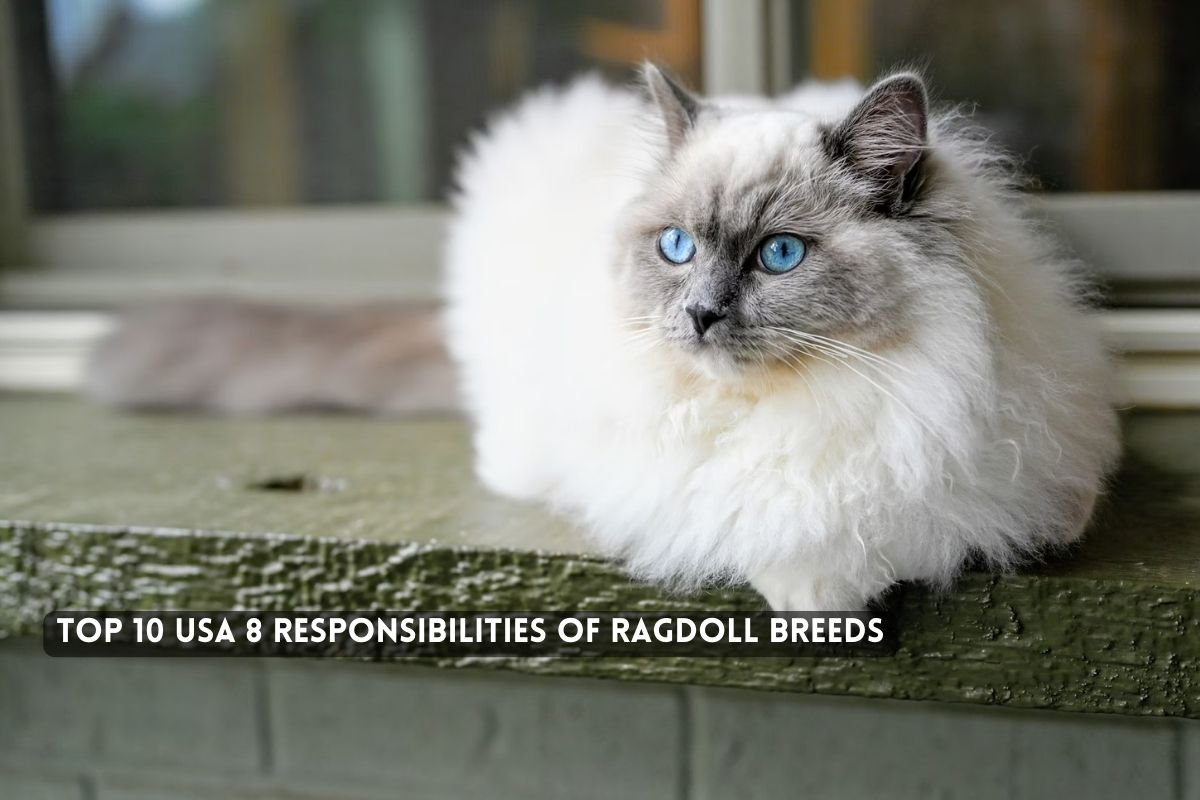Ragdoll cats are one of the most beloved breeds in the United States, known for their gentle temperament, striking blue eyes, and luxurious fur. However, owning a Ragdoll cat comes with specific responsibilities to ensure their health, happiness, and well-being. Here are eight key responsibilities for Ragdoll cat owners.
Regular Veterinary Check-ups
Ragdoll cats, like all pets, require regular veterinary check-ups. These visits help to monitor their health, keep vaccinations up to date, and detect any potential health issues early. Annual check-ups are crucial, but semi-annual visits are often recommended for senior cats.
Proper Nutrition
Providing a balanced diet tailored to the needs of Ragdoll cats is essential. High-quality cat food that supports their size and activity level is important. Additionally, owners should be mindful of portion control to prevent obesity, a common issue in this breed.
Grooming
Ragdoll cats have semi-long hair that requires regular grooming to prevent matting and reduce shedding. Weekly brushing is usually sufficient, but during shedding seasons, more frequent grooming may be necessary. Regular grooming sessions also provide an opportunity to check for parasites or skin issues.
Exercise and Enrichment
Though Ragdolls are typically laid-back, they still need regular exercise to stay healthy. Interactive toys, climbing trees, and regular playtime help keep them physically and mentally stimulated. Ensuring they have enough activity can prevent obesity and related health problems.
Litter Box Maintenance
Maintaining a clean litter box is vital for any cat, including Ragdolls. They are known to be quite particular about their litter boxes. Daily cleaning is recommended to keep the box fresh and encourage good litter habits.
Social Interaction
Ragdolls are known for their affectionate nature and enjoy the company of their human companions. They thrive on interaction and can become lonely if left alone for long periods. Regular social interaction and affection are necessary to keep them happy.
Health Monitoring
Being vigilant about changes in behavior, appetite, or appearance is important. Ragdolls can be prone to certain genetic conditions such as hypertrophic cardiomyopathy. Early detection of any health issue can make a significant difference in treatment and outcomes.
Safe Environment
Creating a safe living environment for a Ragdoll cat involves keeping harmful objects out of reach, securing windows, and providing a cozy space for them to relax. They should be kept indoors to protect them from dangers like traffic and predators.
Conclusion
Owning a Ragdoll cat is a rewarding experience that comes with a set of specific responsibilities. From regular health check-ups and proper nutrition to grooming and social interaction, each aspect is crucial in ensuring the well-being of these gentle felines. By fulfilling these responsibilities, Ragdoll cat owners can enjoy a loving and healthy companion for many years.
FAQs
How often should I groom my Ragdoll cat?
Weekly brushing is generally sufficient, but more frequent grooming may be needed during shedding seasons.
What type of diet is best for a Ragdoll cat?
High-quality cat food that supports their size and activity level is ideal. Portion control is also important to prevent obesity.
Are Ragdoll cats prone to any specific health issues?
Yes, Ragdolls can be prone to genetic conditions like hypertrophic cardiomyopathy. Regular veterinary check-ups are crucial for early detection.
Do Ragdoll cats need a lot of exercise?
While they are typically laid-back, they do require regular playtime and interactive toys to stay healthy and stimulated.
Can Ragdoll cats be left alone for long periods?
Ragdolls enjoy human interaction and can become lonely if left alone for too long. Regular social interaction is important for their well-being.
